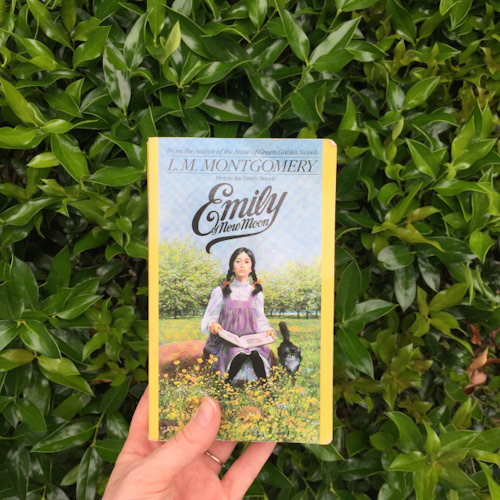Emily of New Moon

It’s hard to read L.M. Montgomery’s Emily series of a young orphaned, tenacious reader, poetess without thinking of Anne of Green Gables. I tried very hard not to compare the two protagonists while reading, but it was kind of impossible. There are a lot of similarities between the two girls and their unfortunate situations.
Anne of Green Gables provided an escape, a best friend, and viable lessons on life for me as a young kid clumsily navigating through life’s tough questions. Anne helped me answer those. I, however, never knew of Miss Emily of New Moon. And how I wish I did know her when growing up, but I'm happy to have met in my later years.
Emily is a recently orphaned, young poetess forced to move in with her estranged, unmarried Aunts, Elizabeth and Laura, along with an endearing, sweet older Cousin Jimmy. She is welcomed to New Moon with rigid rules and harsh structure. Montgomery, similar to Barrie’s Peter Pan, exposes the ineffective approach of dispirited, apathetic parenting through the rough relationships between Aunt Elizabeth and Emily and her teacher. Aunt Elizabeth is intolerant of any kind of frivolous, imaginative behavior and expects Emily to follow suit and be the good little girl she wishes her to be. Montgomery encourages a playful spirit, wandering mind, curious appetite for her protagonist, Emily, through her own willful decisions and fostering other relationships, like that with her fierce friend Ilse, the artistic Teddy, and the brave Perry. These friendships bud a brave, curious, imaginative upbringing for each of them, as we learn each of their private stories throughout the novel.
Montgomery shines a bright light on the issues of pride, a common trope of this coming-to-age story. Emily struggles with her new life at New Moon, adjusting to the airs of her family and trying to uphold the traditions of her late mother’s family. She finds comfort and wisdom as she consults and reveals each of her questions and hurts and joys to her late father in letters. This novel, honestly, could easily have been written in epistolary format, I would have been happy. Montgomery tells Emily’s story through the letters so beautifully. But Montgomery provides other perspectives to Emily’s story that add enrichment, surprise, and truth that I appreciate.
This is a great story for young and old. I highly recommend this one.